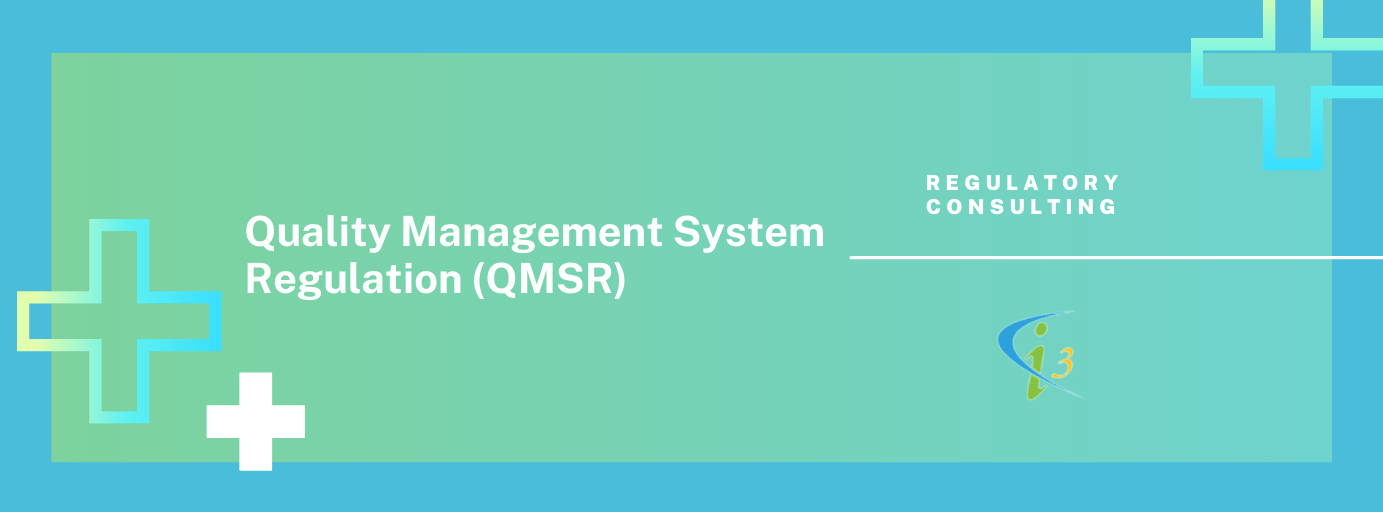In today’s highly regulated healthcare landscape, medical device manufacturers must meet stringent compliance requirements to ensure product safety and effectiveness. Whether targeting the U.S. or European markets—or both—understanding the key regulatory components is essential. Two critical aspects of this journey include complying with the FDA QMSR (Quality Management System Regulation) and preparing a robust Medical Device Technical File. Navigating these frameworks successfully often requires strategic guidance from experienced consultants like I3CGLOBAL., Ltd.
What is FDA QMSR?
The FDA QMSR—short for Food and Drug Administration Quality Management System Regulation—is the framework by which the FDA ensures that medical device manufacturers implement consistent quality systems. In 2024, the FDA revised its quality system regulation to align more closely with ISO 13485:2016, the international standard for quality management in medical devices.
This harmonization helps streamline compliance for companies looking to market their devices globally. However, manufacturers must still understand and implement the FDA-specific requirements embedded within the FDA QMSR. These include:
Comprehensive quality management systems (QMS),
Design controls,
Risk management,
Supplier controls,
Documented procedures for corrective and preventive actions (CAPA).
The revised FDA QMSR places a stronger emphasis on lifecycle risk management, which must be reflected not only in quality system procedures but also in product documentation—especially the Medical Device Technical File for global markets.

What is a Medical Device Technical File?
A Medical Device Technical File is a collection of essential documents that demonstrate the conformity of a medical device with regulatory requirements. This file is mandatory for CE Marking in the European Union and is also a vital asset when applying for FDA approval, Health Canada licensing, or entering other regulated markets.
The Medical Device Technical File typically includes:
Device description and specifications,
Intended use and indications,
Design and manufacturing processes,
Risk management reports,
Clinical evaluation or clinical studies,
Labeling and Instructions for Use (IFU),
Post-market surveillance and vigilance procedures.
Properly maintaining a Medical Device Technical File is not a one-time task. It should evolve throughout the product lifecycle, incorporating updates from design changes, clinical data, and post-market experience.
How FDA QMSR and the Technical File Align
While the FDA QMSR focuses primarily on quality management systems, many of its requirements directly influence the contents and structure of the Medical Device Technical File. For example:
Design controls required by the FDA QMSR are central to the technical documentation.
Risk management processes must be integrated into both QMS procedures and technical files.
Labeling requirements outlined by the FDA must match the specifications within the technical file.
Harmonizing both aspects allows for a smoother regulatory journey. Companies that align their quality system documentation with technical file requirements are better positioned for faster approvals and fewer compliance issues.
Why Choose I3CGLOBAL., Ltd?
Navigating the dual complexities of FDA QMSR compliance and technical documentation can be overwhelming—especially for startups or companies entering new markets. That’s where I3CGLOBAL., Ltd stands out.
As a globally recognized regulatory and quality compliance consulting firm, I3CGLOBAL., Ltd specializes in assisting medical device manufacturers with:
Developing and implementing FDA-compliant quality management systems,
Aligning existing ISO 13485 systems with the updated FDA QMSR,
Creating and maintaining comprehensive Medical Device Technical Files for CE Marking and other global approvals,
Providing gap analysis, mock audits, and regulatory training for internal teams.
Whether a company is preparing for an FDA inspection or a Notified Body review, I3CGLOBAL., Ltd ensures that every document, process, and policy aligns with the applicable regulatory framework.
The Global Compliance Advantage
In today’s interconnected markets, device manufacturers rarely target a single region. Most aim to distribute their products in the U.S., EU, Canada, and beyond. This makes harmonized documentation and regulatory strategy more critical than ever.
With the FDA now aligning its QMS framework with ISO 13485, companies have a unique opportunity to create unified systems and documentation that serve multiple jurisdictions. A well-prepared Medical Device Technical File, developed in accordance with both ISO 13485 and FDA QMSR, becomes a valuable asset in achieving global compliance.
I3CGLOBAL., Ltd understands this global perspective and supports clients with multi-market regulatory strategies that reduce redundancy, save time, and mitigate risk.
Staying Ahead of Regulatory Changes
One of the key challenges in medical device compliance is keeping up with changing regulations. The update to the FDA QMSR in 2024 is just one example. As technology advances and patient safety demands grow, regulatory bodies worldwide are tightening requirements.
Manufacturers must be agile and proactive. Partnering with a knowledgeable consultant like I3CGLOBAL., Ltd helps businesses stay ahead of the curve, adapt to new standards, and maintain a reputation for quality and safety in competitive markets.
Conclusion
Achieving compliance with the updated FDA QMSR and maintaining a complete Medical Device Technical File are essential steps for medical device manufacturers aiming for success in both U.S. and international markets. These components are not just regulatory obligations—they are critical tools that protect patients, support innovation, and enable global market access.
With the support of trusted experts like I3CGLOBAL., Ltd, manufacturers can confidently build quality systems and documentation that meet and exceed global expectations, ensuring smoother approvals and sustained market presence.
No comments:
Post a Comment